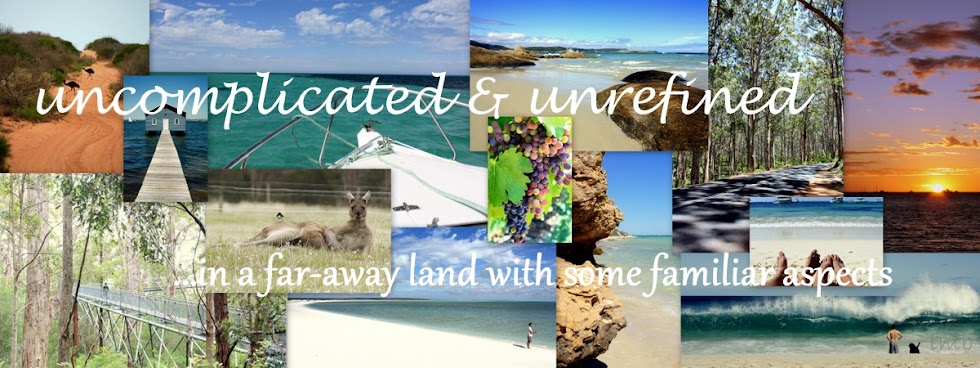FINALLY. We made it to Melbourne. This was my first, and a long awaited trip to Melbourne (Mel-bin),Victoria. The second largest city in Australia is a cultural and artistic melting pot known for good shopping, even better food, Australian Rules Football, and cold weather (by Aussie standards at least - which doesn't mean much if you’re from say, Minnesota or Sweden).
Simply stated - if Sydney is LA, then Melbourne is NYC.
Shane and I had an agreement that we’d visit Melbourne during the Australian Rules Football season which typically runs from April through September. The MCG (Melbourne Cricket Ground) is like the Fenway Park of Australia so it’s difficult to visit Melbourne without watching a “footy” or Cricket game at the MCG.
Aussie Rules Football originated in the state of Victoria and today ten of the seventeen professional AFL teams reside in the second most populous state. A map of Melbourne reads like an AFL league roster – Richmond, Collingwood, St. Kilda, Carlton, and the list goes on. Prior to going to Melbourne I could recite some of its most popular areas without even realizing it – just from watching the weekend footy. To me, the thought of ten professional teams residing in one city is suicidal. I lived in Chicago for five years, and the tension between Cubs and White Sox fans was enough to send you packing for St. Louis. Point is - if you don’t like footy, or at least respect it, you might as well leave Victoria.
As we roamed the city streets, it was endearing to see people walking around wearing their team’s scarf; making their way to one of many footy games taking place over the weekend. My father-in-law played for what used to be the Fitzroy Lions in Victoria and is now the Brisbane Lions in Queensland and my brother-in-law played for the West Coast Eagles in Perth - so it’s a requirement to at least tolerate footy if you’re going to be in this family. My husband’s footy career essentially ended when he moved to the US and fell in love with me...and the idea of travelling. I suppose I can’t take all the credit.
Aside from taking in an AFL game at the MCG on Saturday night, our four day trip to Melbourne was spent shopping, eating, and exploring the city streets. A view of Melbourne’s iconic Federation Square and a stroll down its famous café and boutique strewn laneways are a must. We also spent some quality time in the popular beachside neighborhood of St. Kilda filled with trendy restaurants, historic buildings, and some eclectic shopping. But, our favorite stop was the
Queen Victoria Market – the largest open air market in the Southern Hemisphere. We were mesmerized by the plethora of fresh meat and produce and variety of cultural fare. A vast array of clothing and other goods completes this massive market place. Although I wasn’t thrilled to be headed to Melbourne during the coldest time of year, I was reminded of home when walking the streets with the crunch of fall leaves below my feet - something we don’t get much of in WA.
We stayed at the
The Blackman Hotel, perfectly situated between the Central Business District (CBD) and St. Kilda. The Blackman Hotel is a part of Melbourne’s
Art Series Hotels which each feature the work of a prominent Australian Artist – showcasing Melbourne’s love for the arts. With ocean and park views from our beautifully appointed room- for only $170/night it was one of the best value hotels I’ve ever stayed at.
If you solicit a list of Melbourne restaurant recommendations, you’ll get more than you bargained for. We settled on
Golden Fields;
Circa, the Prince;
Movida Aqui; and
Las Chicas for breakfast with a childhood friend I hadn’t seen in twenty years who is living in Melbourne with her husband. What would an expat do without Facebook.
Although we easily could have entertained ourselves for a couple more days in Melbourne there is also plenty to do outside the city including: watch wild penguins on
Phillip Island, drink wine in the
Yarra Valley, or drive for hours along Australia’s famous
Great Ocean Road. We’ll save these activities for the warmer months of the year.
 |
| Flinders Street Station and a Melbourne tram |
 |
| Federation Square |
 |
| Yarra River |
 |
| Carlton Botanical Gardens |
 |
| Carlton Botanical Gardens |
 |
| CBD laneway art |
 |
| an allotment garden in St. Kilda |
 |
| St. Kilda Pier |

























































